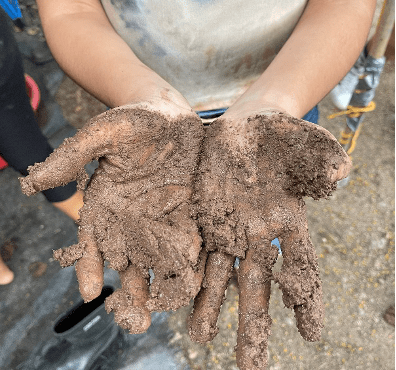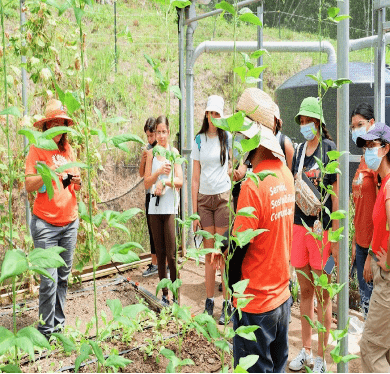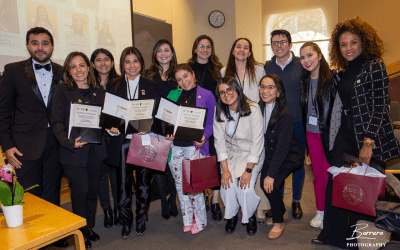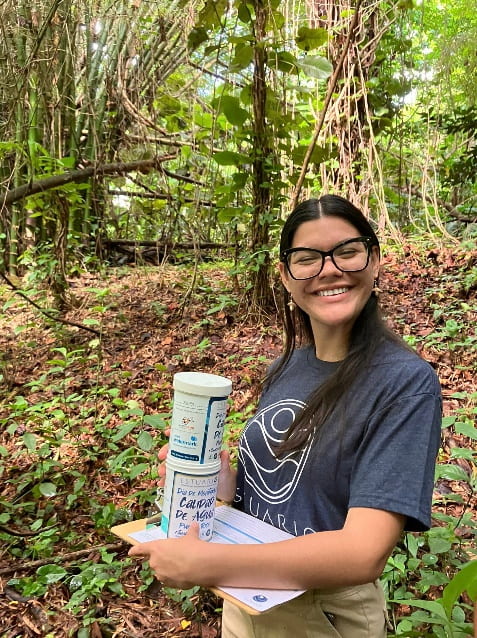
About the Author
Yaneilis Muñoz-Gómez, a sophomore at the University of Puerto Rico Rio Piedras Campus in the Faculty of Natural Sciences, Department of Environmental Sciences. Her interests are related to the field of ecology, renewable energies and sustainability.
The Land Belongs to Us
I think a lot about the land, living in Puerto Rico. The Harvard Puerto Rican Summer Institute gave me the knowledge and experience needed to grow a seed and strive to be agents of change guided by the wise ways of ecology. The Institute taught us that the best approach of protection is preserving the seed—something I hadn’t thought of before.
Those who work on our lands have an essential task. Day by day, Puerto Rican farmers work tirelessly to produce good-quality food in our fertile land. We also have agriculturists and agronomists who possess the will to conserve and preserve our lands despite the constant struggle to achieve that.
The land belongs to us, I’ve always believed and recently did a painting about this. It gives us sustenance as well as healthy and local nourishment, which is why it is our job to protect them and mindfully work with the land. At the Summer Institute, we learned to promote the use of available lands in a responsible, dedicated way that matches our efforts to take care of our resources.
Lands and Colonization
After the Laborer Regulation was established and the exploitation of agricultural workers remained, peasants found a way to evade laws and maintain access to small pieces of land. However, in 1876, the Mountain Ordinances law was established, and limited common lands called “mountains” or “wastelands” to agriculturists without land. This legal disposition gave way to property appreciation and the creation of a paid workforce in the middle of a liberal revolution that made agriculturists and merchants the center of the empire’s political and economic geography, according to many scholars.
Following the North American invasion in 1898, the United States Forest Service and the Interior Department validated the property titles and rights established by the Board of Abandoned Territories. Nevertheless, while they typically mapped out the small lands without title, they didn’t consider them legal possessions.
The expansion of commercial agriculture in the 19th century caused land to depend on financial capital. As a result, big enterprises went into debt and small businesses found sustenance in other types of labor, an unfortunate turn of events.
During the mid-20th century, colonization reared its head in the lands of Puerto Rico. Records reveal that small farmers began to be marginalized and a process of land concentration began. Legislation during that period actually criminalized subsistence agriculture.
Capitalism in Agriculture
Worldwide agriculture has grown distorted and submerged in a vicious cycle in which soil degradation is associated with pollutants and the greenhouse effect. Gas emissions from the greenhouse effect in agriculture are linked to changes in food production and the general rural landscape in a simple space of capital valorization. Implementing changes in this process is a big challenge since agriculture is part of a global capitalist market. Waste and inequality are examples of this phenomenon. The constant fight for capital and control of production in the field has meant oppression and low wages for farmers and agriculturists.
The hoarding of our lands is a stage within this process. Waste is a subproduct of agricultural control based on capital. We shouldn’t forget that under capitalism, the main goal of agricultural trade production is not to feed the population, but to obtain corporate profits. Waste is a part of the added value that is sold as merchandise.
Capitalism in Puerto Rican agriculture has tended to focus its marketing control on few, but big enterprises. Corporate consolidation manifests in both big companies and plantations as well as all parts of the chain value: commercialization, processing and packaging, transport and sales. The abuse of power ranges from pricing manipulation to the violation of human rights among the workforce, which has contributed to the increase in socioeconomic needs.
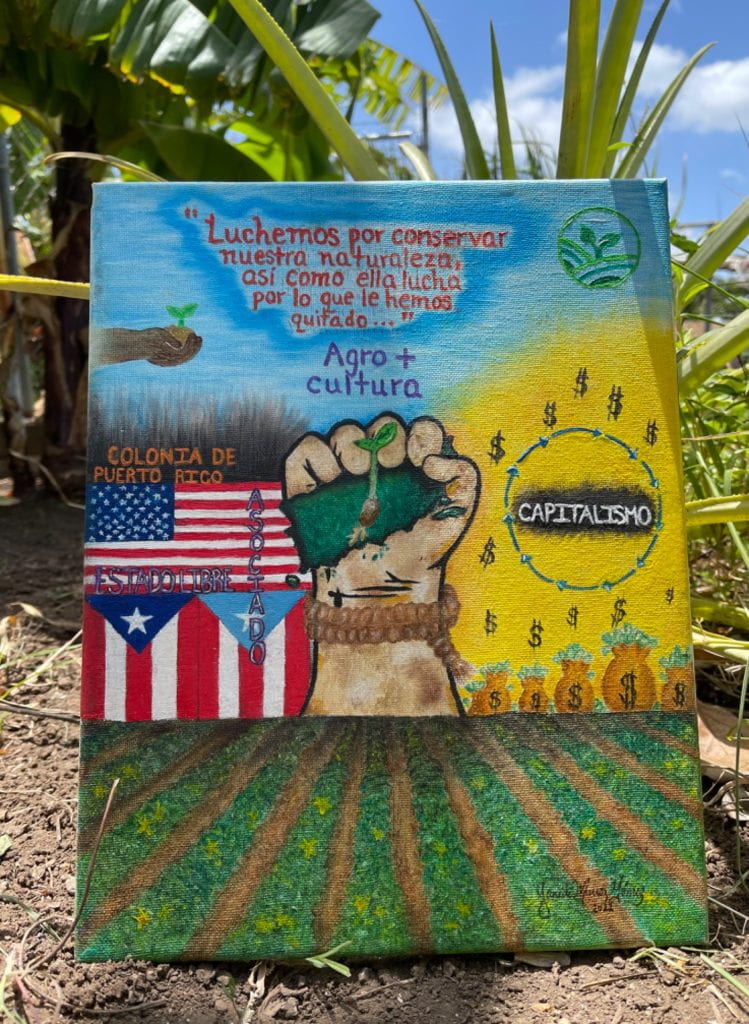
Agroecology, an Escape from the Cycle
While socioeconomic needs arise, people look for ways to make a living and many times, often turning agriculture because of the availability of fertile land ready for development. I’m fascinated to see that the term “agroecology” has at least three relevant meanings widely used in literature: a science that studies the exosystemic and cultural relations of agroecosystems, a sociopolitical movement that searches for agrarian grievances around land ownership, and a form of agriculture under a production system based on conservation, use of non-toxic substances with the exclusion of genetically modified organisms and the promotion of agrobiodiversity use.
Agricultural biodiversity is used by traditional agriculturists since it contributes to the protection and restoration of soil, water conservation, diversification of crops, agroforestry systems and animal integration.
This model has grown in popularity. especially in the creation home gardens, which in turn decreases the budget for groceries, promotes the union of communities through exchanges and supports the local economy by purchasing from Puerto Rican agriculturists.
Agroecology presents a radical vision that differs from globalized food systems based on homogenization, specialization, industrialization and short-term economic measures. New agroecological systems are based on local, biodiverse, autonomous, community based and small-scale family measures that are supported by solidary consumers who understand the political and ecological impact of eating.
To deal with the environmental and social crisis in the agricultural industry, capitalism must be transformed into the development of new sustainability bases for a more solidary society. Agroecology calls out for a new world, one not ruled by the market, but rather dedicated to solving the urgent socioecological problems that affect humanity. It’s a world I believe in as someone who is studying ecology.
Agroecology Symbolism
Agroecology transcends merely planting, it is laced in symbolism. The first and perhaps most important symbol is the appreciation of agriculture as a means of preserving life through nourishment. This reveals a profoundly sacred element of the art of food production: the origin and acceptance of the spiritual links that encompass the earth to human bones, their shadows, and memories centered around the generosity of the land, which provides nourishment for those in need of it. Respect is another hidden symbol within agroecology, the lives of those involved in agriculture are respected, given that they play an important role in the agrosystemic balance.
Let’s fight to preserve nature and our lands, just like they have fought for what we have already taken.
More Student Views
Río Piedras: As a Desert Flower Blooms in the Night
The sunset of my first day at the Harvard Puerto Rico Winter Institute (HPRWI) painted the sky with violet and magenta. It felt as if the day had just begun.
Colombian Women Who Empower Dreams
English + Español
The verraquera of Colombian women knows no bounds. This was the message left with me by the March 30 symposium, “Empowering Dreams: 1st symposium in honor to Colombian women at Harvard.”
A Review of Born in Blood and Fire
The fourth edition of Born in Blood and Fire is a concise yet comprehensive account of the intriguing history of Latin America and will be followed this year by a fifth edition.

